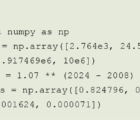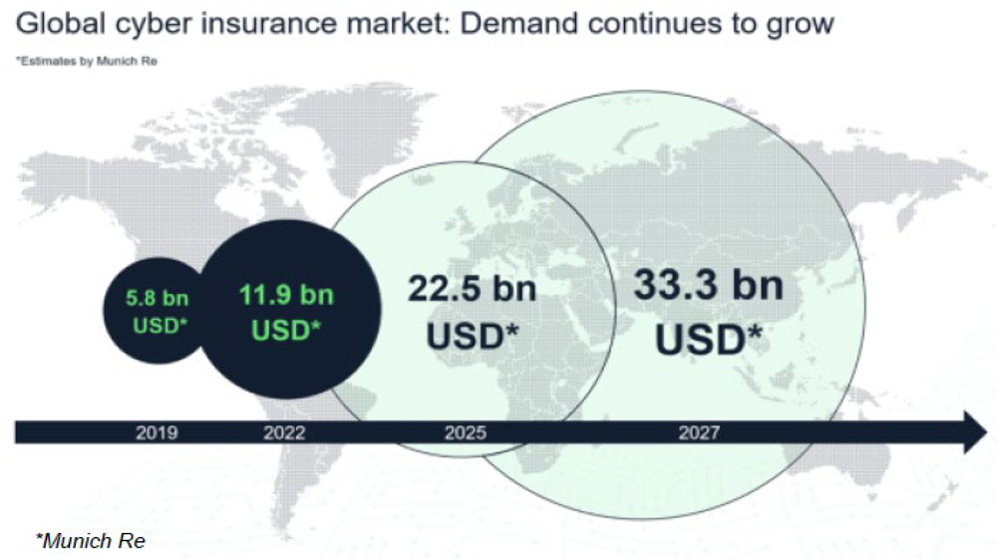
Price optimization has several meanings, and that’s just the beginning.
About a half-dozen state insurance departments in recent months have issued bulletins warning auto insurers against what consumer groups call “price optimization.”
To date, insurance departments from California, Florida, Indiana, Maryland, Ohio, Vermont and Washington have issued such warnings.
That regulators are issuing bulletins on the subject is “curious” for several reasons, Robert Hartwig, president of the Insurance Information Institute (III), told lawmakers at the National Conference of Insurance Legislators (NCOIL) meeting in July. His reasons include the absence of consumer complaints and detectible market disruption.
Insurance commissioners strive to ensure that rates are not excessive, inadequate or unfairly discriminatory. So when insurers are accused of practices that result in unfairly discriminatory rates, regulators rightfully pay attention — and so do actuaries.
In evaluating the practice of price optimization, regulators are also looking into other ratemaking issues through the National Association of Insurance Commissioners’ (NAIC) Casualty Actuarial & Statistical Task Force, said John M. Huff, Missouri’s insurance commissioner and president-elect of the NAIC.
The price optimization discussion will include “recommendations on a reasonable range of rating factors appropriate for the setting of rates by insurers,” he said. “The discussion must also include issues of additional transparency and disclosure requirements in rate filings.”
Consumer groups assert that price optimization is being used to discriminate among customers who buy private automobile insurance. One particular component of price optimization that has garnered significant regulatory attention applies to the basic economic concept of price elasticity of demand (or price elasticity), which can be used to determine the demand sensitivity when prices change.
“Price elasticity purposely raises premiums of loyal customers who are more likely to pay higher premiums than shop around,” said Robert Hunter, an actuary and director of insurance for the Consumer Federation of America.
“That should not be taking place as it violates the legal requirements of adequate, not excessive, nor unfairly discriminatory ratemaking,” said Michael Angelina, executive director of Saint Joseph’s University’s Academy of Risk Management and Insurance and current chairperson of the American Academy of Actuaries’ Price Optimization Task Force. “That is not what price optimization was intended to do,” he added.
It is unclear how commonly auto insurers are applying price elasticity for determining prices.
The insurance industry itself does not fully support price elasticity. “We agree that determining prices on the basis of elasticity of demand is inappropriate and regulators should focus on it,” said David Snyder, vice president of policy development and research for the Property Casualty Insurers Association of America (PCIAA). “The danger is [that] because of different definitions, regulators can limit other acceptable practices.”
Definition Shapes Regulation
How price optimization is defined sets the tone for public understanding and policy discussion. Herein lies a critical challenge.
The NAIC’s task force is in the process of developing a white paper to be finalized this fall. Its goals include defining price optimization and providing recommendations for regulators. “We are relying on (the) NAIC process to drive consistency and consensus among the states, where applicable,” Huff said.
As they consider consumer groups’ complaints about price optimization, insurance commissioners have been presented with varying and perspective-based definitions. Which version they choose can have a direct impact on how insurers can determine rates and prices.
“Many of these (bulletins) have been written in a way that is so broad, many long-standing practices would be called into question,” Hartwig said. “It is also the case that, interpreted literally, many of these bulletins would prohibit an insurer from providing a discount for loyalty or accident forgiveness.”
This concern is also shared by the American Academy of Actuaries and the Casualty Actuarial Society. In a July 31 letter to the NAIC’s task force, the Academy wrote, “Some bulletins would appear to prohibit or restrict long-standing practices such as considering competitor rates or considering consumer behavioral response to rate changes…”
An informational memorandum released last May by Florida’s Office of Insurance Regulation illustrates why it can be difficult for insurers to know if decades-long pricing practices are suddenly being discouraged.
The bulletin defines price optimization as “a process for modifying the insurance premium that would otherwise be charged to an insured or class of insureds in order to maximize insurer retention, profitability, written premium, market share, or any combination of these while remaining within real world constraints.”
A broad interpretation of Florida’s definition “is likely not in line with market practice for the past 30 years,” said Ben Newton, chair of the CAS Ratemaking Committee and managing director of Pennan Consulting.
The NAIC task force’s May 14 draft — the most recent version at press time — does not clearly define price optimization. Instead, it presents six different definitions, including those by the CAS, the Academy and the CFA Institute.
To appreciate the challenge of defining price optimization for rate regulation, consider descriptions by the CAS compared to that of the CFA.
The CAS defines price optimization as “the supplementation of traditional actuarial loss cost models to include quantitative customer demand models for use in determining customer prices. The end result is a set of proposed adjustments to the cost models by customer segment for actuarial risk classes,” according to the white paper draft.
The definition presented by the CFA, however, casts price optimization in a different light. According to the NAIC white paper, CFA defines it as “a practice where premiums are set based on the maximum amount a consumer is willing to pay, rather than the traditionally accepted methods of calculating premiums based on projected costs, such as claims, overhead and profit.”
The New Scrutiny
Regulators are also concerned that using sophisticated methods for price optimization could “extend beyond acceptable levels of adjustment to cost-based pricing,” which could cause unfair rates specific to the policyholder, according to the NAIC Task Force white paper.
“I started raising concerns (to regulators) in 2013 after attending a CAS webinar called ‘Price Optimization vs. Actuarial Standards’ and realized that insurers were using models to move prices away from risk-based prices for the first time,” Hunter said. “The eye opener was the price elasticity,” he added. “That’s what really got me going.”
Hunter found evidence that Allstate was doing just that in a Wisconsin rate filing. In December 2014, the CFA released a statement that, in the organization’s opinion, Allstate was “basing customers’ auto insurance premiums on a new factor, called ‘marketplace considerations,’” which is not related to the risk that a driver will cause an accident or file claims.
After reviewing rate filings in 30 other states, he saw that Allstate was applying price elasticity to determine premiums for individual policyholders as well, which is against states’ regulations. According to the CFA statement, Allstate introduced “illegal price systems” in 16 states.
By assigning individual customers to microsegments in its rate filings, Hunter said, the insurer was illegally charging customers at individual rates. After discovering some 300,000 microsegments in Pennsylvania, he noticed that only 500 of the segments contained more than one person. “That was, in my view, evil,” he added.
Hartwig offers a different interpretation. Hunter is “mistaken,” adding, “Allstate has microclasses. They are not using individual elasticity of demand.” Newton also offered, “This might have just been a way for Allstate to provide regulators with required documentation and transparency while protecting their intellectual property.”
Justin Herndon, an Allstate spokesperson, said that the company’s price is determined by risks and costs. “We continuously update our price so we can make sure customers benefit from the most advanced approaches,” he said. “As a result, our prices are highly competitive and fair.”
Hunter did not name another insurer practicing demand elasticity within the realm of price optimization, but he did say other insurers are engaging in the practice as well. “We have complaints from people and agents about large increases for loyal customers. Since insurers are so embarrassed by the use of these practices they do not tell the regulators … People have no idea what is happening,” Hunter said.
Consumer groups also contend that price optimization is discriminatory because it can affect low income and/or minority groups. They reference a nearly decade-old Brookings Institute study to make their point.
Insurance industry studies offer a different view. African-Americans were more likely to shop around for auto insurance than other groups, according to the Insurance Research Council (IRC) study, “Shopping for Auto Insurance and the Use of Internet-Based Technology.” Of the 1,168 respondents who shopped around for insurance, African-Americans were most likely to do so (at 33 percent) compared to 24 percent of whites and 22 percent of Hispanic respondents.1
An III survey from last year revealed that 68 percent of consumers with incomes below $35,000 shopped for insurance at policy renewal compared to 61 percent of consumers with incomes about $100,000.
Consumer groups have other objections, which fall under actuarial judgment.
Actuarial Judgment
It’s no secret that the automobile insurance industry is highly competitive. Personas such as Progressive’s Flo and Geico’s gecko cater to price-sensitive customers.
“The competitive market has been really good for consumers,” Angelina said. This is demonstrated by the fact that “there are countless advertisements urging policyholders to shop for lower rates and the residual market/assigned risk pools are at an all-time low.”
For insurers to compete, they continually fine-tune their ratemaking strategies to ensure their particular approach — or “special sauce” — distinguishes their company from another. Thanks to greater data availability and the sophisticated models that meaningfully correlate information, special sauces have grown more robust — and complicated.
Price optimization, which includes several approaches, can be part of an insurer’s special sauce. How actuaries use data, models and other technologies for determining prices, falls into the sphere of actuarial judgment. This allows actuaries to reach different conclusions or apply different methods to formulate special sauces.
Actuaries exercise judgment according to the Actuarial Standards Board’s Actuarial Standards of Practice. Regulators can and do limit the boundaries of actuarial judgment — a reminder of why defining price optimization and clarifying issues concerning rate filing practices, including price optimization, are crucial.
At its basic level, rates are developed based on loss information, administrative costs and profit. This formula alone means that rates can depend on data quality, business costs and company goals (i.e., profitability, market share or fairness).
Price choices in ratemaking proposals fall under “profitability.” These choices are also a matter of actuarial judgment and opinion.
Understanding that achieving profitability encourages a robust insurance market, virtually all states have allowed insurers to use non-loss data as part of actuarial judgment because it informs price through correlations of risk characteristics. Actuaries, for example, have found that certain individual risk characteristics such as age, occupation and education are reasonable for determining risk and therefore premium.
Rates themselves are generally based on loss information. Non-insurance information such as U.S. Census Bureau data, used for density and territorial modeling, can provide greater insight and context, Newton said. “To the extent that non-insurance data is predictive of losses and we can prove that, I think we should use it,” Angelina said.
Insurance companies “have long been allowed to use actuarial judgment,” Snyder said. “The big thing is not to confuse a particular use of data with long-used market adjustment practices.”
The draft NAIC white paper recognizes that before the “introduction of data-driven quantitative techniques,” the rating process was more subjective. “The key difference,” it says, is that “market demand and customer behavior are quantified” and the effect of deviating from the lost cost is “mathematically measured.”
Price optimization, Hartwig said, along with more data, helps insurance companies quantify and therefore improve actuarial decision making. “That’s the benefit, because rates are more accurate,” he said. “As insurers are getting better at estimating risk, rating classes get smaller and smaller.”
Critics of price optimization, and any rating approach that deviates from loss data, say it can lead to price discrimination. Using non-insurance data provides different ways of moving the price away from actuarially sound rates, which can raise prices, Hunter said. However, Newton said, since rates in total must be actuarially sound, any increase for one insured must be offset with a decrease for another insured.
Many uses of so-called non-loss data are embedded in traditional ratemaking, which is why it will be important to distinguish exactly which types of data will be considered acceptable to regulators, Newton said.
Actuaries, Hunter believes, should develop price according to the traditional formula of loss data, administrative costs and profitability. Using “Big Data” is acceptable to him as long as it is loss data, he said.
“Hunter’s position is untenable and archaic”, Hartwig said, when “prices and rates have to reflect the real world in a competitive market place.”
Regulatory Decisions
Insurance and actuarial groups alike hope that regulators will not “throw out the baby with the bath water” and carefully distinguish which practices, if any, are considered unacceptable.
Wayne Fisher, CAS immediate past president and board chair, pointed out that CAS members are bound by a Code of Professional Conduct and adhere to laws, rules and regulations.
“The CAS is providing the ratemaking practitioner’s insight to the NAIC to assist its efforts to define price optimization and clearly define the ‘rules of the game,’” he said. “In a highly competitive market, clear boundaries, as consistent as possible among the various states, will enable our members to use their analytical skills to advance their firms’ competitive position, and have the confidence they are doing so within various rules and regulations.”
Hartwig hopes that that if there are going to be restrictions on price optimization, “they be very narrow with a specific definition of acceptable and non-acceptable price practice.”
However insurance regulators decide, one thing is for sure. The price optimization debate is not going away anytime soon.











